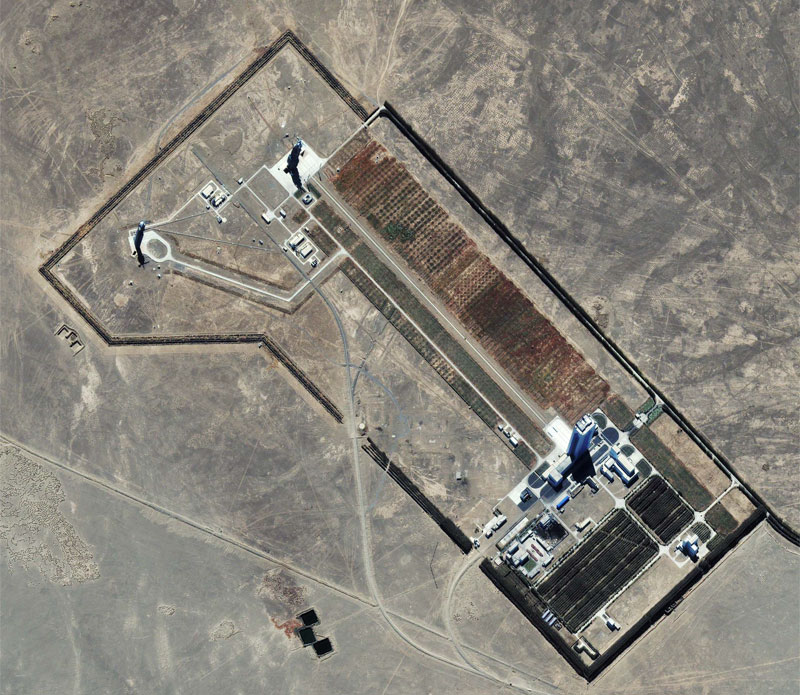Satellite Spots China’s Manned Rocket

UPDATE: Due to a clerical error at Space Imaging,the image first posted here 11:25 a.m., October 11, 2005 was not Jiuquan Satellite Launch Center on October 3. The correct image has been added to thisstory and our Zoom Viewer.
BOULDER, Colorado -- Acommercial remote sensing spacecraft has caught Chinese space workers readyingtheir second piloted space mission.
TheIkonos satellite, operated by Space Imaging of Thornton, Colorado, took images of China's human spaceflight launch complex on October 3 and 6 and on October 9,with a shadow covering much of the rocket between two structures. The very tipof the rocket can be seen emerging from the shadow.
Launchof the Long March booster topped by the Shenzhou 6 is expected soon, accordingto several of China's news services. The craft reportedly will carry twoastronauts, with liftoff from the Jiuquan Satellite Launch Center in northwest China's Gansu Province.
Noofficial word as yet as to the names of the two space travelers that willconduct the Shenzhou 6 mission, but a Chinese newspaper identified the pilot asFei Junlong and said he would be accompanied by Nie Haisheng. The report by theChongqing Morning Post didn't cite a source. The spacecraft will return to themain landing field in the central part of the Inner Mongolia Autonomous Region,Chinese space officials have reportedly stated.
Thetwo-person flight of Shenzhou 6 will expand the flight parameters of the soloShenzhou 5 mission. The near-at-hand space trek will reportedly be longer.Also, the crew will enter into the craft's orbital module--a segment attached tothe reentry portion of the vehicle. They will live and work for several dayswithin the orbital module.
The upcoming flight marks the secondpiloted space mission for China. Two years ago, astronaut Yang Liwei became thefirst person of his nation to travel into Earth orbit.
Get the Space.com Newsletter
Breaking space news, the latest updates on rocket launches, skywatching events and more!
China's entry into human spaceflight puts thatnation into an exclusive club--the third country to have independent means topropel people into orbit. The former Soviet Union launched Yuri Gagarin intoEarth orbit in April 1961. U.S. astronaut, John Glenn, was orbited in February1962. Yang was boosted into orbit in October 2003.
Western experts expect that this secondShenzhou flight will further shakeout spacecraft systems, life supporthardware, and also hone piloting skills. A subsequent mission could involvespacewalking with Chinese space officials noting that a space station complexis also being planned.
- ZOOM View: Close in on Shenzhou 6 on its Launch Pad
- Shenzhou Rising: China's Second Manned Spaceflight
Join our Space Forums to keep talking space on the latest missions, night sky and more! And if you have a news tip, correction or comment, let us know at: community@space.com.

Leonard David is an award-winning space journalist who has been reporting on space activities for more than 50 years. Currently writing as Space.com's Space Insider Columnist among his other projects, Leonard has authored numerous books on space exploration, Mars missions and more, with his latest being "Moon Rush: The New Space Race" published in 2019 by National Geographic. He also wrote "Mars: Our Future on the Red Planet" released in 2016 by National Geographic. Leonard has served as a correspondent for SpaceNews, Scientific American and Aerospace America for the AIAA. He has received many awards, including the first Ordway Award for Sustained Excellence in Spaceflight History in 2015 at the AAS Wernher von Braun Memorial Symposium. You can find out Leonard's latest project at his website and on Twitter.









